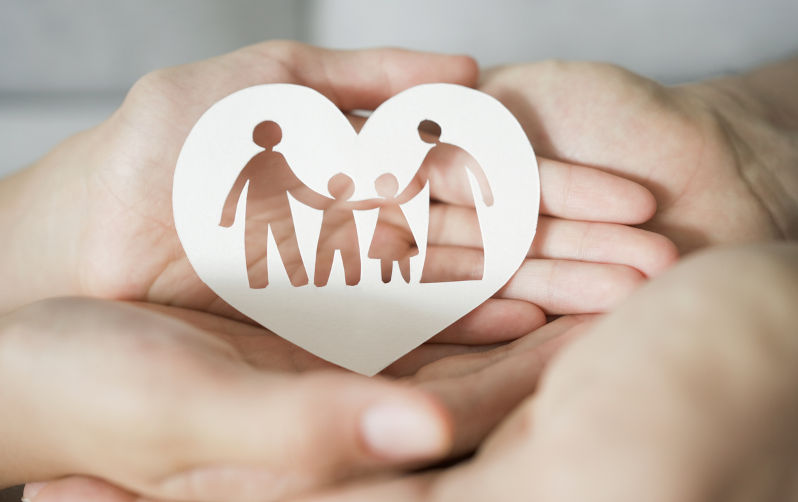Inaction also speaks louder than words
May 27, 2025
The focus of my work, over more than half a century, has been on getting good things to happen and/or preventing harm from happening. It has been a mixed history that includes both successes and failures; victories and defeats.
Upon reflection, two themes emerge. The first is my emphasis on children, parents and people of childbearing age. The second is that I have spent far less time and energy combatting “evil” than striving to overcome “The Three Is”: Ignorance, Indifference and Inertia.
Much of my life’s work has been dedicated to surmounting the amorphous — but still profoundly negative — consequences of inaction. For example, imagine Mark intentionally threw a child into the deep end of a pool knowing the child could not swim. Mark committed an action that would be universally reviled. Instead, what if Mark was the only person around when the child accidentally slipped and fell into the deep end – and Mark (a good swimmer) heard the child scream, saw the child starting to drown… and yet chose to do nothing? Wouldn’t Mark’s inaction also be both harmful and reprehensible?
Mark’s pernicious inaction writ large is what I witnessed in North Carolina decades ago. I was president of the NC Child Advocacy Institute when the Leandro case came before the state’s Supreme Court. In a landmark, progressive decision, the Justices ruled that every child in North Carolina has an equal constitutional right to receive a “sound, basic education” beginning in early childhood. The Court ordered that its Leandro Decision be fully implemented without delay. Hundreds of millions of dollars were then set aside for this purpose.
Three decades later, those funds remain unspent; the Leandro Decision has not been implemented and most of NC’s children continue to languish in schools that remain highly inequitable and poorly performing. Why? Chiefly because the NC Supreme Court’s composition changed and its shift to a conservative majority resulted in Justices content to do nothing to advance Leandro’s promise to NC’s children and young people. Their inaction on Leandro has caused real and lasting harm. These Justices are watching children drown educationally – and mirroring Mark’s pernicious poolside inaction.
The problem exists here and now, too. Since coming to Scotland 20 years ago, I have become increasingly convinced of the value and importance of preconception and interconception health, education and care. It is a remarkably promising way to both promote good outcomes and prevent negative ones. Babies, parents, communities and our society would benefit substantially by giving priority to preparing early and meaningfully for healthier pregnancies leading to better lives.
It should be hugely popular and an “easy sell”, politically and professionally. After all, there is no constituency or powerful opponent seeking unhealthy pregnancies and worse lives! Unfortunately, preconception/interconception health, education and care are still largely marginalised, unfunded and unimplemented. Ignorance, indifference and inertia suffice to keep it in the shadows, instead of in the spotlight. That has been true in Australia, as well as the UK.
Australia exhibits a “been there, done that” attitude toward key elements of harm prevention prior to pregnancy. Having been a much earlier adopter than the UK of folic acid (Vitamin B9) fortification of wheat flour, Australia has been resting on its laurels and slipping into harmful inaction. Rice and other grains have become increasingly important staple foods for a growing proportion of Australians. Continuing to limit fortification to wheat flour means that Vitamin B9’s power to prevent Neural Tube Defects is decreasingly meaningful and relevant today.[i] 1&2
Australia is stuck in outdated beliefs and policies that enable or reinforce inaction. For instance, communications about the risk of NTDs focus solely on spina bifida and related conditions – while ignoring the reality that miscarriages, stillbirths, therapeutic terminations, neonatal deaths and maternal harm are far more common NTD-driven “unhappy endings” to pregnancies. While the truth could, and should, spur action, widespread ignorance of what’s really at stake here perpetuates inaction.
It’s worth remembering there is no natural law or heavenly command making it inevitable that approximately half of all pregnancies will continue to be unplanned, “accidental” or mistimed. So too, it is not immutable destiny that one in four pregnancies will experience an “unhappy ending”.
Collectively, we have not “given all we’ve got” to reduce this high proportion of ill-prepared-for pregnancies – or to improve the odds of each pregnancy having a healthy, happy ending. Rather, these undesirable outcomes are essentially the result of individual, organisational, professional, governmental and political inaction.
Doing nothing does not mean nothing happens. Instead, it means that harms that could have been prevented are tolerated and allowed to persist. The consequence of doing nothing — when a positive action is possible — frequently is needless suffering and avoidable death. Globally, there is a stillbirth every 10 seconds – and miscarriages are even more frequent. Not all of them were preventable… but many of them were.
When preconception/interconception health, education and care eventually become commonplace, people will look back at our time and wonder why it took so long to stop being so sanguine about inaction. We can, and should, become the generation that finally accords priority to “doing the right thing and doing the thing right”. We can create many more “happy endings” to pregnancies, as well as far fewer avoidable tragedies.
All of us can play a role. It may seem minor – but could have a major impact, collectively and cumulatively. We can begin by paying attention, and calling attention, to the barriers to healthier pregnancies and better lives that could and should be removed. Each of us can do something to advance positive changes. Make your mark instead of becoming a Mark… through your own inaction.
A version of this column originally was published during April 2025 in ( Vol 12 Issue 3 - IJBPE (International Journal of Birth and Parent Education)
The views expressed in this article may or may not reflect those of Pearls and Irritations.
